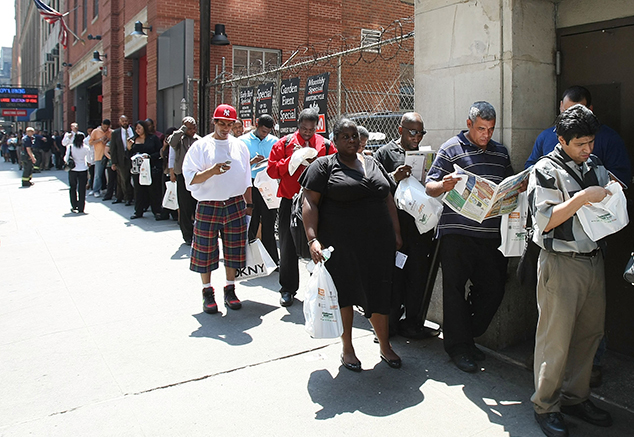By Fern Gillespie
The Bureau of Labor Statistics has announced that the national unemployment rate for Black Americans hit a record low of 5 percent in March 2023.
However, there’s an unemployment crisis happening to Black New York City residents. Although the overall unemployment rate among all New Yorkers was 5.3 percent this quarter, the unemployment gap between Black and White New Yorkers is staggering.
According to a recent report from The New School’s Center for New York City Affairs, between January 1 and March 31, 2023, the unemployment rate for Black New Yorkers rose to 12.2 percent, while the unemployment rate for White New Yorkers dropped to 1.3 percent.
The Center for New York City Affairs points out that the 1.3 percent unemployment rate for White New Yorkers is the lowest it has been since 2000. “This sort of sustained divergence hasn’t happened before,” at least in this century, Dr. James A. Parrott, a co-author of the report, told the New York Times. “Race-based discrimination is a big part of that,” he said, noting that data shows Black job seekers are often among the last to be chosen for openings.
“The results of the report are startling but not surprising,” Gregory Anderson, President and CEO, of Bridge Street Development Corporation in Bedford Stuyvesant, told Our Time Press. “All this report is saying is that our community was disproportionately and adversely impacted by the pandemic and the recovery. It’s hard for us to come back. It just speaks to the need for greater focus, efforts, funding, programming, and resources for our community.”
The Bridge Street Development Corporation provides civic and economic opportunities to low-to-moderate-income residents of Central Brooklyn. The nonprofit is also a provider for the New York City Summer Youth Employment Program and coordinates internships and placement for 1,500 young people. Its workforce programs include OSHA safety training, Microsoft Office certification, and training collaborations with corporate sponsors.
Nationally, the National Urban League observed the March Jobs Report on Black unemployment record low of 5 percent with caution. “Black workers are disproportionately concentrated in several employment sectors that are hardest hit by the crisis: leisure and hospitality, transportation and warehousing, and minimum wage jobs.” stated a Senior Economic Advisor to the National Urban League Dr. Bernard E. Anderson, who is Professor Emeritus at the University of Pennsylvania’s Wharton School, in an official NUL press release. “On the other hand, Black workers are also well represented in health care, the sector that should see an upward spurt in employment during the crisis. At worst, the crisis might return Black workers to the employment and income disparities observed during the post-WW II decades up to the 2008-09 recession.”
In Brooklyn, the Bridge Street Development Corporation’s workforce programs are on the frontline combating unemployment affecting Black New Yorkers. “We make sure that we provide the training, but who is providing the jobs when someone is qualified? stressed Gregory Anderson. “That’s always been the disparity.”
